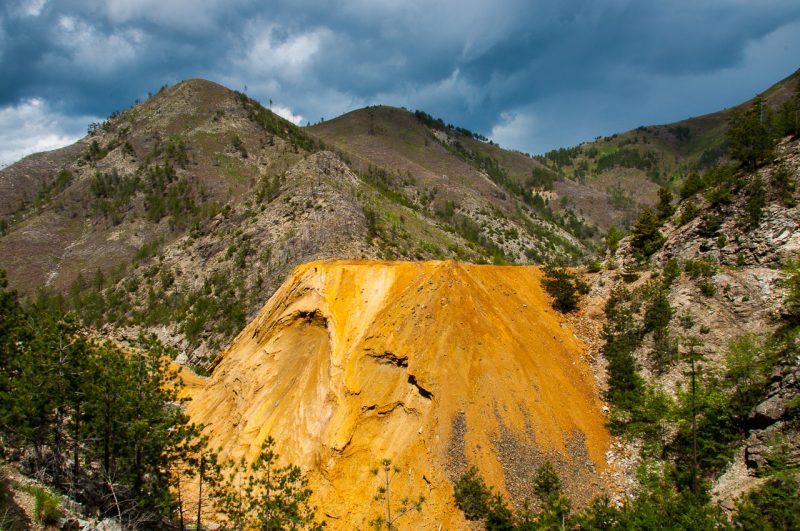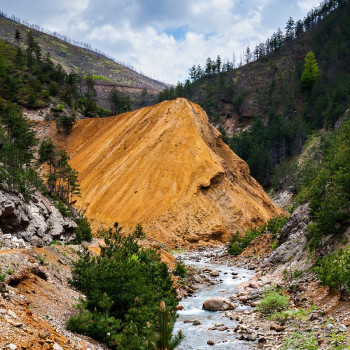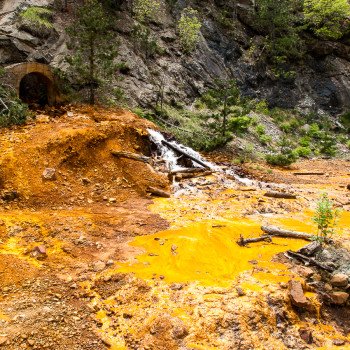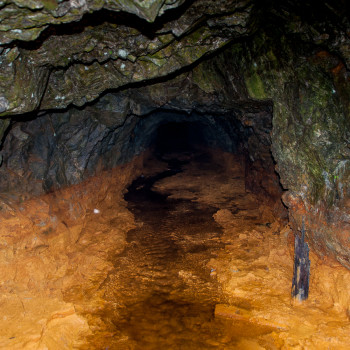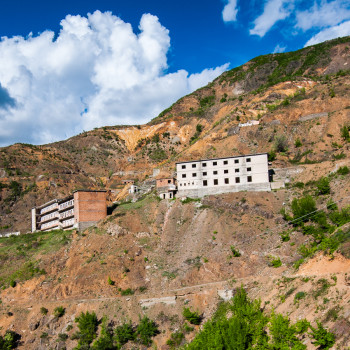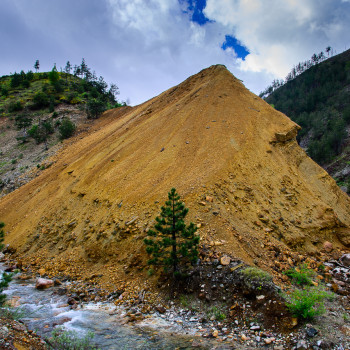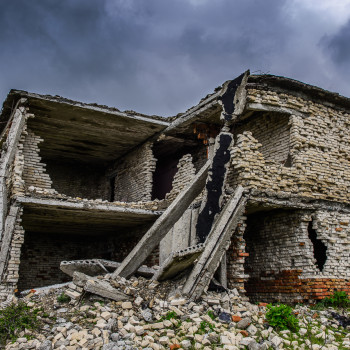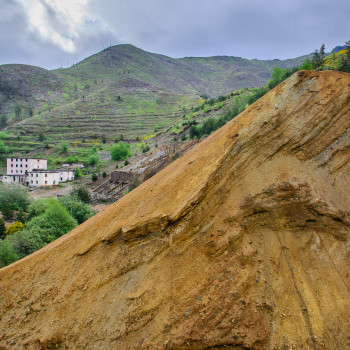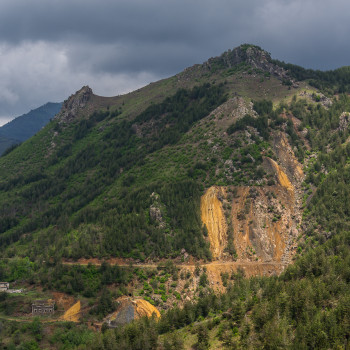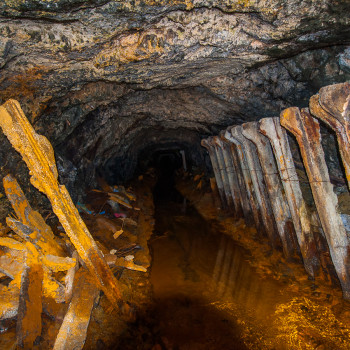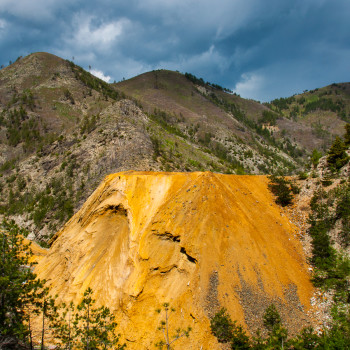Albánské gulagy / Albanian Gulags
Co mají společného Svaz sovětských socialistických republik, Československá socialistická republika, Albánská lidová republika a vůbec všechny režimy ve světě označované jako lidové a demokratické? Porušování lidských práv, potlačování svobody projevu a náboženské svobody. A také pracovní tábory – gulagy.
Gulagy v Albánském pojetí byly těžké pracovní tábory v dolech.Dřina v primitivních a nelidských podmínkách pod zemí, velké mrazy, v létě strašné horko. Vězni spali zabalení v dekách na betonové podlaze v nevytopených ubikacích, jídlo jednou denně, peklo. A to jen proto, že měli jiné názory, které se nebáli říct. Nejčastější obvinění bylo za agitaci a propagandu proti lidové moci. Většinou bez řádného soudního procesu byli vězněni řadu let společně s duševně chorými a skutečnými těžkými zločinci. Ponižování, šikana, nenávist, to byl běžný denní chleba. Celkem 200.000 lidí prošlo pracovními tábory. V zemi, která měla tři milióny obyvatel, téměř každý 15. člověk měl někoho v rodině, kdo byl vězněn.
Nejvíce pracovních táborů bylo v okolí Tirany. Nejtěžšími a nejhoršími gulagy v Albánii bývaly doly na měď v oblasti mezi Fushë Arrëz a Reps. V jednom údolí důl Gurth Spaç, přezdíván albánskou Osvětimí, v druhém důl Lumëbardhë a v sedle mezi nimi vůbec nejtěžší věznice Qafë Bari. V dolech na měď a pyrit zde dřelo více jak 1.000 lidí nepohodlných komunistickému režimu, zejména intelektuálů. Dodneška není zdokumentováno, kolik lidí nepřežilo. Tyto gulagy byly otevřeny v roce 1968 a uzavřeny byly a vězni propuštěni až v roce 1988, těsně před pádem komunistického režimu.
Příšerný je příběh povstalců, kteří protestovali proti nelidským podmínkám ve věznici Qafë Bari. V roce 1984 byli hromadně popraveni. Jejich ostatky nebyly ve většině případů do dneška nalezeny. Pouze rodina Sokola Zef Sokoli po dlouhém pátrání a vyptávání se účastníků, kteří odmítli vystoupit z anonymity, nalezla ostatky svého bratra poblíž Shkodëru až v roce 2011.
Absurdním je příběh premiéra Koço Kota. Ten slavnostně otevřel nové pracovní vězení ve městě Burell ještě za vlády krále Zoga. V roce 1946 po převzetí moci komunisty se sám stal vězněm a ve vězení zemřel. Dnes si ve věznění odpykávají své tresty nejtěžší zločinci spojenís drogovými mafiemi.
Zcela typickým příkladem hrůznosti komunistického režimu je pak příběh učitele Pjetëra Arbnoriho, který byl za své názory a opakované organizování vzpour vězněn neuvěřitelných 28 let.
Za mřížemi nekončili jen lidé s odlišnými názory, ale i celé rodiny bývalých politických přisluhovačů, kteří se stali nepohodlnými albánskému hrůzovládci Enveru Hoxhovi. Příkladem je třeba Fatos Lubonja, jeho otec vedl Hoxhovu státní televizi, pak se stal režimu nepohodlný a byl i se synem uvězněn. Fatos Lubonja byl odsouzen na 7 let za kritiku režimu a pak na dalších 12 let za prosovětskou opozici (Albánie byla v té době proti Sovětskému svazu). Ve vězení napsal na cigaretový papír román „Poslední masakr“. Nejsmutnější je, že v Albánii, stejně jako u nás, se dnes ukazuje, že lidé mají krátkou paměť.
Dnes jsou vězení i doly v troskách, opuštěné budovy, zavalené štoly. Jsou plány na rekonstrukci a vytvoření památníku, ale zatím zůstává jen u slov.
Albanian Gulags
What do the USSR, the Czechoslovak Socialist Republic, the People’s Republic of Albania and all regimes in the world that put the words “people’s” or “democratic” in their names have in common? Violation of human rights, suppression of freedom of speech and suppression of religion. And also labour camps – gulags.
The Albanian version of gulags were hard labour camps set up in mines. Inhuman treatment, heavy labour under primitive working conditions below the ground, freezing winters and incredibly hot summers. The prisoners slept wrapped in blankets on concrete floors in unheated shacks obtaining food just once a day. Sheer hell. People were imprisoned there only because they had differing opinions and were not afraid to voice them. The most frequent charges were agitation and campaigning against the communist regime. Usually without a proper trial, these people were imprisoned for many years together with mentally ill and heavy criminals. Humiliation, bullying and hatred were their everyday experience. There were in total 200 000 people sent to labour camps. In a country with the population of 3 million this meant that nearly one person in 15 had someone in their family who had been put in prison.
The biggest number of labour camps existed around Tirana. The heaviest and worst gulags in Albania used to be the copper mines in the area between Fushë Arrëz and Reps. In one of the valleys it was the mine of Gurth Spaç , dubbed the Albanian Auschwitz, in the other it was the mine of Lumëbardhë, and in the saddle between them there was Qafë Bari, the heaviest prison in Albania. More than 1,000 people which the Communist regime wanted out of the way, particularly intellectuals, toiled in the copper and pyrite mine there. Until today it has not been documented how many people died there. The gulags were opened in 1968 and they were ultimately shut down and the prisoners released in 1988, shortly before the collapse of the communist regime.
There is the horrible story of prisoners who protested against inhuman conditions in Qafë Bari. The prisoners taking part in the revolt were mass executed in 1984. In most of the cases their remains have not been found until today. Only the family of Sokol Zef Sokoli, after a long investigation and after inquiring the participants, who refused to step out of anonymity, found the remains of their brother near Shkodëru in 2011.
There is also the absurd case of the former prime minister Koço Kota. He was the person who lead the opening ceremony at the newly opened labour prison in Burell under the reign of King Zog. In 1946, after the communists took the power, he became the prisoner there and he later also died there. Today, the prison serves for the most heavy criminals convicted for organised crime.
A typical example of the terror imposed by the communist regime is the story of Pjetër Arbnori, who stayed in prisons for his opinions and repeated organising of revolts for the unbelievable 28 years.
Not only people with differing opinions, but also entire families of political supporters of the former regime, who became inconvenient to the Albanian tyrant Enver Hoxha, ended up in prisons. An example is for instance Fatos Lubonja. His father was the director of Hoxha’s state television, but than he became inconvenient to the regime and was sent to prison together with his son. Fatos Lubonja was sentenced to 7 years for criticising the regime and later for another 12 years for pro-soviet political opposition (Albania was at that time against the Soviet Union). In the prison, he wrote his novel called “The Last Massacre” on cigarette paper. The sad thing is that in Albania, similarly as in our country, people seem to have a short memory.
The prisons and the mines are in ruins today. Abandoned buildings, derelict mines. There exist plans for reconstruction and building of a memorial, but so far these are just plans.
